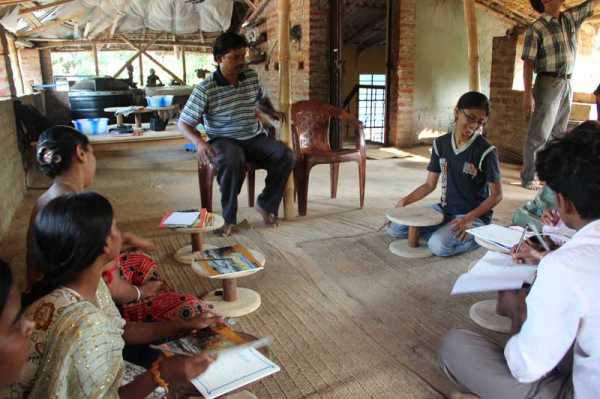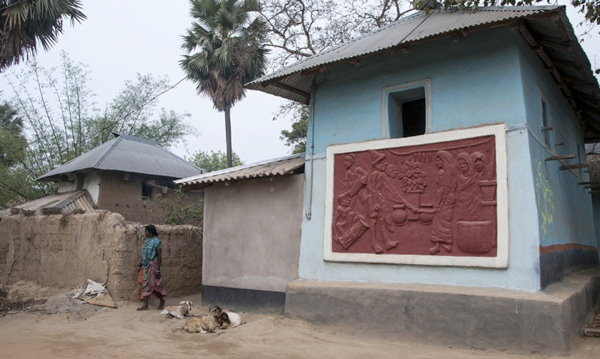
The Santal village Bishnubati is situated about 8 km from Santiniketan and Sriniketan, the abodes which Rabindranath Tagore made famous. Since almost 30 years Bishnubati and its neighbouring Santal village Ghosaldanga have made a singularly vigorous effort to develop their potential in the fields of agriculture, economic uplift, and especially of education and culture.
Sanyasi Lohar has been part of these village development programmes. After conducting crafts courses (pottery, terracotta and batik) for several years, he undertook a unique community arts project in conjunction with the Museum of Santal Culture in Bishnubati.

Learn more about this unique project and view a series of photographs here: Six Murals by Sanyasi Lohar and his team >>
eBook versions of Santals Celebrate the Seasons
Santals-Celebrate-Seasons-Murals-Print (PDF 552 KB)
Address
Ghosaldanga Bishnubati Adibasi Trust Ashadullapur (Bishnubati)
Village Bishnubati /Ashadullapur
P.O. Sattore
Dist. Birbhum 731236
West Bengal
India
Sanyasi Lohar +91 9434636856
[email protected]
All contents are being published with an understanding that the respective copyright owners have agreed to the license terms explained in the Creative Commons Attribution-NonCommercial-NoDerivs 3.0 Unported License. This means that no commercial use or modification of such content is permissible without written consent by their respective copyright holders.
Learn more
Ashadullapur Gramin Silpa & Sastha Bidhan Kendra | Sanyasi Lohar
Crafts and visual arts | Masks
Daricha Foundation | Deoal Chitro (wall paintings) | Homepage | YouTube channel
eBook | Background guide for education
Ghosaldanga Bishnubati Adibasi Trust
Santal music CD and DVD by Ghosaldanga Bishnubati Adibasi Trust
Santali language | eBook | A Santali-English dictionary – Archive.org
Video | Roots and Branches: The Lifeworld of an Enlightened Villager in West Bengal
Video | Santali video album “Ale Ato” (Our Village, Part 1 of 2) – West Bengal
To locate the Museum of Santal Culture in Bishnubati village (near Santiniketan) on the map seen below, open by clicking on the left button:
Tips for using interactive maps
Toggle to normal view (from reader view) should the interactive map not be displayed by your tablet, smartphone or pc browser
For details and hyperlinks click on the rectangular button (left on the map’s header)
Scroll and click on one of the markers for information of special interest
Explore India’s tribal cultural heritage with the help of another interactive map >>
